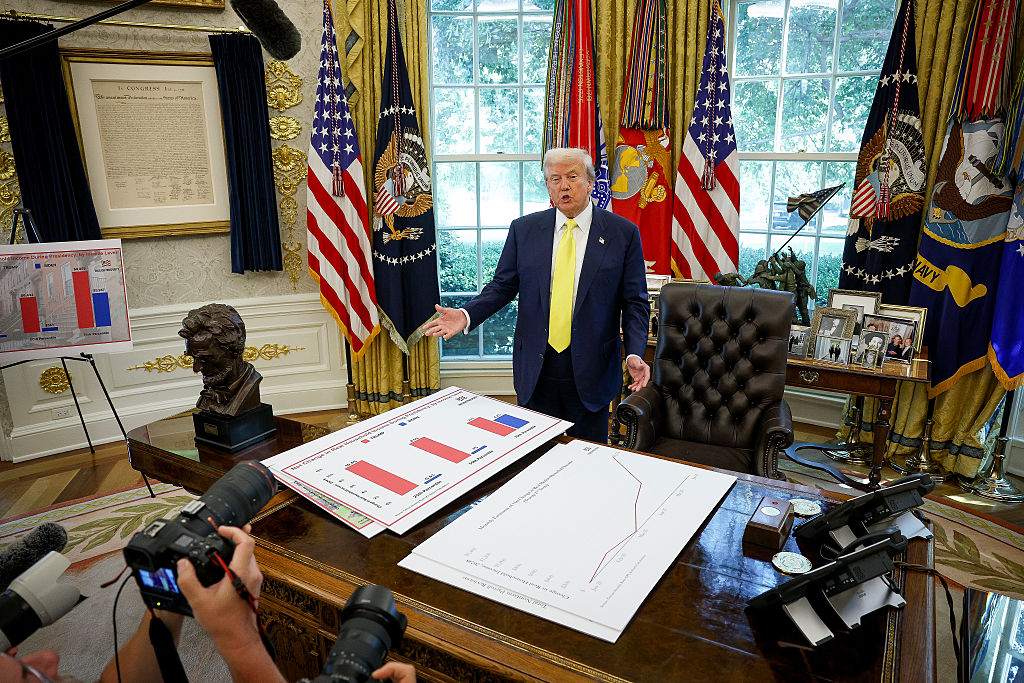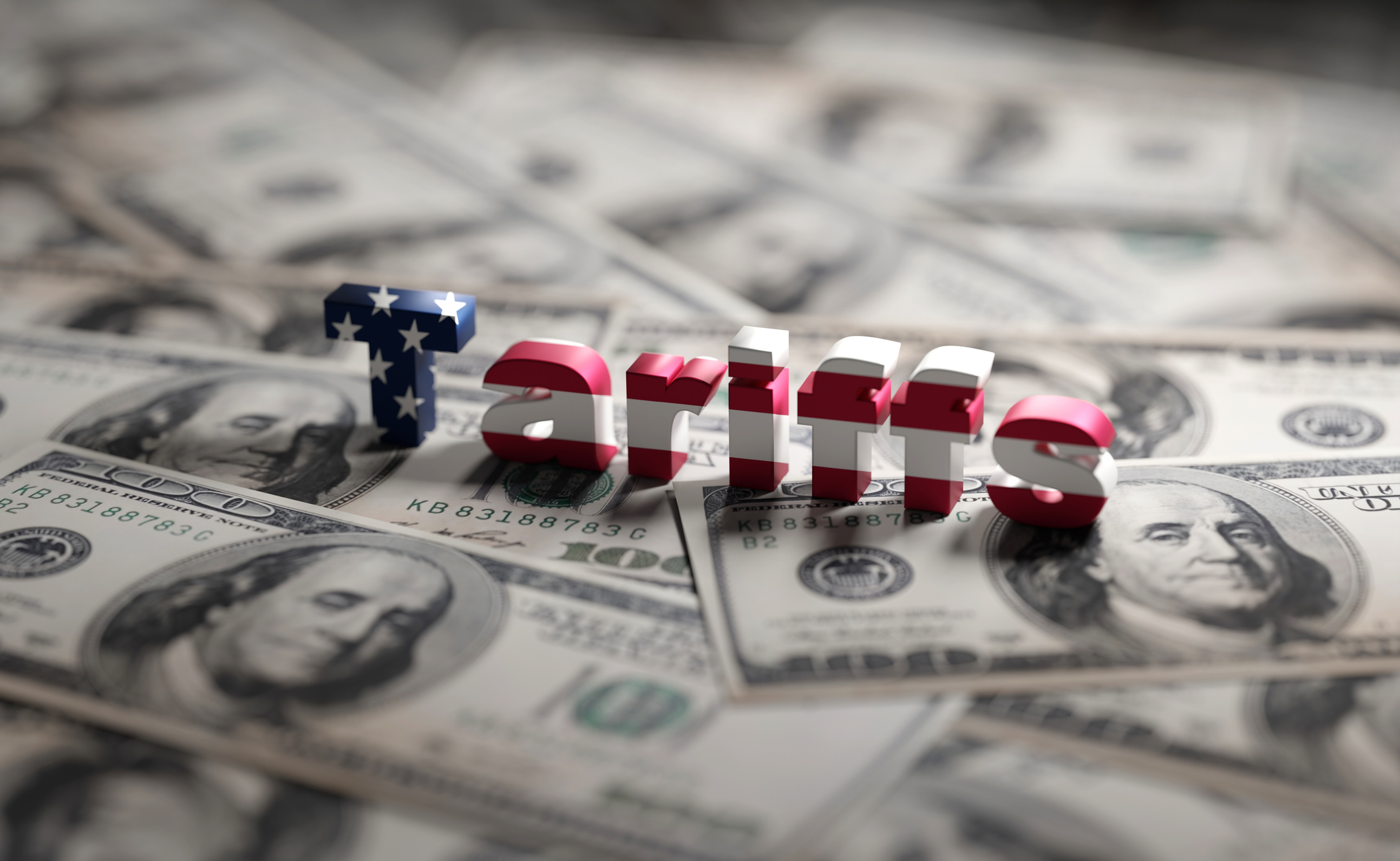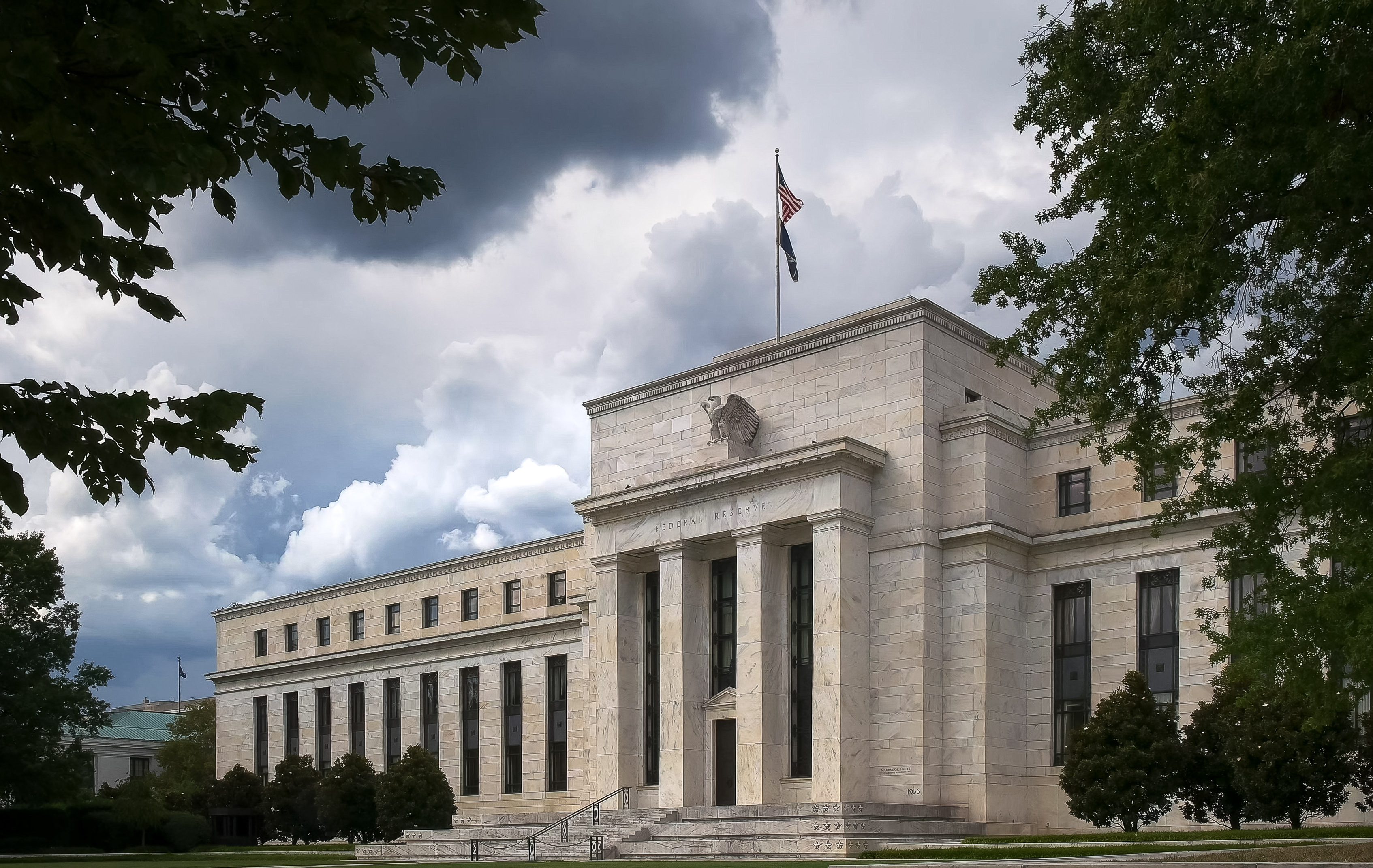PODCAST: The 2022 Stock-Market Outlook with Anne Smith and James K. Glassman
Sure, measuring stock markets by calendar years is a bit artificial, but it’s still a good way to give your portfolio a checkup. We forecast what stocks and sectors will fare well in 2022. Also, how the 401(k) got its start.

Listen now:
Subscribe FREE wherever you listen:
Apple Podcasts | Google Podcasts | Spotify | Overcast | RSS
Links mentioned in this episode:
- Meet the Architect of the 401(k) Plan
- Kiplinger’s 2022 Investing Outlook
- PODCAST: Investing for Income with Jeffrey Kosnett
- James K. Glassman’s 10 Stock Market Picks for 2022
- The 22 Best Stocks to Buy for 2022
- 5 Stocks to Sell for 2022
Transcript:
David Muhlbaum: No doubt stocks in 2022 are going to have a tough time topping 2021’s stellar performance, but rise they will, Kiplinger is forecasting. We’ll dig into the year ahead with investing editors Anne Smith and James K Glassman and see what individual equities they’re recommending as well. Also, what the architect to the modern day 401(k) plan thinks of his idea today. All coming up on this episode of Your Money’s Worth. Stick around.
From just $107.88 $24.99 for Kiplinger Personal Finance
Become a smarter, better informed investor. Subscribe from just $107.88 $24.99, plus get up to 4 Special Issues

Sign up for Kiplinger’s Free Newsletters
Profit and prosper with the best of expert advice on investing, taxes, retirement, personal finance and more - straight to your e-mail.
Profit and prosper with the best of expert advice - straight to your e-mail.
Welcome to Your Money’s Worth. I’m kiplinger.com Senior Editor David Muhlbaum, joined by my co-host, Kiplinger Senior Editor Sandy Block. Sandy, how are you doing? How is Detroit?
Sandy Block: Cold, David, very cold, but otherwise just fine.
David Muhlbaum: Good, good. You interviewed somebody this month, somebody who seemed to me like one of the unsung heroes of personal finance. I know there are probably people outside the benefits world who have heard of him, but I’m guessing not that many. I’m talking about Ted Benna here. Am I overstating or understating his celebrity by calling him an unsung hero?
Sandy Block: Well, not really if you are someone who makes your living writing about the importance of saving for retirement. I think that Ted does deserve that honor.
David Muhlbaum: Which is, the father of the 401(k) plan. I am willing to bet a tiny, tiny, tiny bit of my 401(k) savings that the vast majority of our listeners have, or had a 401(k), but I doubt the vast majority know how this massively popular savings plan got its start. So tell us about Ted Benna’s role.
Sandy Block: Well, I think the best way to explain it is to say that Ted figured out how to turn an obscure provision in the IRS code, that was originally used, I think, by senior executives to pad their pensions, into a savings plan for the masses. And what he came up with are things that seem very routine now, but weren’t 40 years ago. One was payroll deduction, which means that your contributions are taken out of your paycheck. You can’t spend money that you don’t have, and that’s a huge thing. And the second is matching contributions, which is the way that you encourage people to sign up. If you know your employer’s going to kick in some money, you are more likely to put in some of your own.
David Muhlbaum: And that was the sweetener that he had to add to get it off the ground when he was conceiving how to implement the 401(k).
Sandy Block: Right. I think that was something that made it worthwhile for people to do. And I think it also coincided with the disappearance of traditional pensions. So we needed something for people to save for retirement because they could no longer count on a traditional pension. But it’s still hard to get people to save and I think those are the innovations that we really give Ted a lot of credit for.
David Muhlbaum: So 40 years on, how does the father of the 401(k) plan think it’s going?
Sandy Block: Well, he basically thinks that the biggest... There are a couple problems he sees. One is, in some cases, expenses are too high and it’s too hard to figure out how much you’re paying. I think that’s not the case for very large companies, but it can be a problem for small companies. And on that-
David Muhlbaum: Those are the expenses that a firm incurs to have a 401(k) administered for it?
Sandy Block: Right. The expenses the firm incurs which is sometimes passes on to employees. And also, the expense of the funds themselves. If you work for a really big company that has a sophisticated HR department, they will probably negotiate with Fidelity or Vanguard or T. Rowe Price and get you some really low cost, great funds. But if you work for a company with 50 people and the CEO is also the guy who decides which funds to put in your 401(k) plan, he might just go with funds he heard about from a pal, or something like that. And in fairness too, may not have the amount of assets to get the lowest fees available. So I think that’s really where the problem is. I think for people who work for big companies, fees aren’t a problem. For people who work for small companies, it can be.
David Muhlbaum: And at the individual level, Benna is still gung ho on the idea of the young investor or the young employee getting in on it?
Sandy Block: Right. Yeah. And he does some pretty smart math elsewhere in the story that I wrote for the February issue, which has this interview with Ted. He says, "It’s never too early to start investing even if it’s only 1% of your pay." And one point he made I thought was really interesting in the story is, if you start very young, even if you invest only a small amount in your 401(k) contribution, by the time you retire, the majority of the money in your account will probably be from investment gains, not the money you put in. But if you start, say, in your forties, the majority of money in your account when you retire is going to be money that you contributed, which means you have to contribute a whole lot more to get to the same place.
So, he really encourages people who are just starting out, even if it’s a small amount to get started, because they really are in a position to benefit. And the other thing, he sort of discourages people from taking loans from their 401(k) plans, even though they may look very attractive. They do slow you down because you’re taking money out and reducing the amount of compounding while that money’s not in your plan.
David Muhlbaum: So 401(k)s today, huge industry, trillions of dollars of money in them collectively, where does Benna think it still needs to go, what could get better?
Sandy Block: What he says needs to make it better is more opportunities for people to participate. Because if you work for a major company, this is not an issue. Even if you work for a mid-size company, it’s probably not an issue. But if you work for a company with 10 employees, 20 employees, for those companies or those employers offering a 401(k) is just too much work. The administration, the implementation is just very hard for them. His recommendation is that small employers that don’t have a 401(k) plan should be required to offer a savings plan for their employees that offers payroll deduction and auto enrollment as well. It doesn’t have to be a full-fledged 401(k) plan, but it should be some kind of savings plan. And I think he has a model IRA that does this, that offers the things that encourage most people to participate, which is payroll deduction-
David Muhlbaum: And pre-tax.
Sandy Block: Yeah, pre-tax, payroll deduction and auto enrollment. Because one thing we’ve learned fairly recently is that if you require people to opt out, instead of opting in, if when you take a job you’re automatically enrolled in a 401(k) plan, even if you have the option of opting out, most people don’t. It’s a huge incentive. And there’s just been a huge increase in people participating in these plans, if they’re auto enrolled. So he would like to see a model savings plan for small employers that is low cost, maybe doesn’t offer all the bells and whistles of a 401(k), but does offer payroll deduction and auto enrollment. And he thinks we’ll see a lot more people saving for retirement if we have something like that.
David Muhlbaum: Do you think he ever regrets not trying to trademark this? I mean, it could have… We have the Roth. We have the Roth. We could have the Benna-fit.
Sandy Block: The Benna?
David Muhlbaum: The Benna-fit!
Sandy Block: No, I think the Roth was created. And I think the 401(k) was…
David Muhlbaum: Was interpreted…
Sandy Block: Engineered, reverse engineered.
David Muhlbaum: Yeah. Implemented or yes, well. Well, we still can give him our thanks for putting a lot of Americans on a safer road to retirement with their 401(k) savings. Thank you, Mr. Benna. Coming up next, the year ahead in investing.
The 2022 Stock-Market Outlook with Anne Smith and James K. Glassman
David Muhlbaum: Welcome back to Your Money’s Worth. You can’t talk about investing without talking about time. How did a stock or fund perform over the last year, five years, 10 years. And then there’s your personal timing as well. How soon might you need to cash out your investment? Well, there’s another timeframe, the good old calendar year. And that’s how Kiplinger, like other prognosticators, likes to look at investing trends. How did stocks do in 2021? How will they do in 2022? And then, of course, there’s breaking that down. How will sectors or even individual stocks fare in the year ahead?
David Muhlbaum: And we’re joined today by two people whose specialty that is. One is Anne Kates Smith, the executive editor of Kiplinger’s Personal Finance who coordinates that publication’s investing coverage. The other is James K. Glassman, who’s been a columnist for us since 2004, which is, of course, just one of his gigs. He’s been a newspaper and magazine publisher and undersecretary of state, which means we could, and maybe should, call him Ambassador Glassman. He’s written a number of books as well. The most recent being Safety Net, The Strategy for De-risking Your Investments in a Time of Turbulence. Welcome to you both.
James K. Glassman: Thank you.
Anne Kates Smith: Happy to be here.
David Muhlbaum:
Great. So going from 2020 into 2021, everybody kind of knew the story, "Good riddance to the great dumpster fire of 2020. Hello, fresh start." And that was the broad theme, not an investing-specific one, and 2021 didn’t necessarily live up to expectations. I think most people were hoping to have seen the end of the pandemic, but no. However, in terms of stock investing, 2021 was, well, is so far, just spectacular. Before we move on to 2022’s forecast, Anne, can you give us a recap of 2021?
Anne Kates Smith: Yeah. It was a crazy year for stocks, it was such a juggernaut. The S&P 500, which is everybody’s favorite broad market measure, has returned 26% so far this year as the small cap, Russell 2000, is up only about 10%. The aggregate bond market index is down about 1.5% as interest rates started to creep a little bit higher.
Sandy Block: Okay. I think, at this point, we have to point out that there’s two trading weeks left to go, so let’s not jinx things. Right?
David Muhlbaum: Right, yeah. Stock market is off December 24th, but a full trading day on December 31st. I guess I got to clear all the year-end stuff.
Sandy Block: Right. So 2022 forecasting, David did all his disclaimers about calendar years being a somewhat arbitrary approach to investing horizons. But, you know, it is what it is. If 2021 was so red hot, Anne, what’s the story for 2022?
Anne Kates Smith: Well, we might have been a little too cautious in our prior year outlook. For 2021, we told people they needed to moderate their expectations and that was a big mistake. But sticking with that game plan because, hopefully, and I say this with a little bit of caution because of the Omicron variant that’s spreading, but you can only reopen an economy once. I’m really keeping my fingers crossed on that. So there was explosive growth by almost any measure in 2021 that you just can’t replicate again. So, for instance, in 2022, we’re looking for, Kiplinger is looking for, about 4% percent economic growth. That’s down from what we think will be 5.6% this year. Earnings growth, which is really the driver of the stock market, we’re looking at 50% almost in corporate earnings growth for this year.
Anne Kates Smith: That’s not going to happen again in 2022. In fact, analysts think that it’s going to revert back to more, the long term average, which is about 7 to 8%. So given those more modest parameters, we are telling people to moderate their expectations for the stock market. You can’t expect 60+ all time highs in another year. So we’re looking for high single digits, which again, is about an average return for the stock market, maybe a little bit lower even. But we’re looking about price returns of 7 to 8% and maybe between another one to two points, percentage points, from dividends.
David Muhlbaum: And I want to give you props for getting Omicron right. For those of you who heard me pronounce it wrong a couple of weeks ago, cut me a little slack. The term was like an hour old then and I guess maybe my classical Greek isn’t so hot.
Anne Kates Smith: I studied classical Greek in college.
David Muhlbaum: Well, there you go.
Sandy Block: After that interesting opening, I think the people are interested in specific stocks to buy or sell, and yes, we have recommendations, Jim too, we haven’t forgotten about you. But before we move into ticker specifics, Anne, I want to ask about what you so aptly called, "The elephant in the room," inflation. We just got the November consumer price index numbers. The annual inflation rate in the U.S. accelerated to 6.8% in November of 2021, the highest since June of 1982, which is when I was just out of college. Is that going to continue and how can the bulls stand up to this beast?
David Muhlbaum: Ooh, the animal metaphors are flying.
James K. Glassman: Well, Kiplinger’s inflation forecast for 2022 is quite a bit lower at about 2.8%. I think the thinking on Wall Street is that inflation is going to run hotter than it has for years, which is 2% and below. But it’s going to be right around that 3% mark, which is, again, the long term, going back to 1926, the historical average. So higher and sticky and more persistent, but not 1970s levels at all. But that said, you’ve got to be thinking in your portfolio about protecting yourself from inflation. And if you bought tips earlier this year, good for you. Congratulations, they’re very expensive now. But the good news is that stocks in general, because of their growth component, are very good inflation hedges. Stocks over time will generally, not all the time, but over the long haul will keep up with inflation so that the stocks are a good place to be.
David Muhlbaum: I’m glad you mentioned TIPS, treasury inflation-protected securities, because we actually did a segment with Jeff Kosnett a couple weeks ago. And I’m going to put a link into it because, frankly, today we’re just going to blast right past fixed-income investments and stick with stocks. So as you said, Anne, stocks are a good investment for an inflationary environment. Are there some that are better than others? What stocks, if you will, are inflation ready?
Anne Kates Smith: Yes. You definitely want the inflation fighters. And those are companies that can keep their costs low. They have a handle on costs so they’re not suffering by paying more for rising input costs. They’re companies that can raise their prices because they enjoy such strong demand or because their market share’s expanding so strongly that they can go ahead and raise prices. And I’m thinking of companies like Netflix (NFLX), the streaming giant, they raise their prices and people keep paying them. Farm equipment maker Deere (DE), is another one with a strong market share. We also recommended AmerisourceBergen (ABC), which is a healthcare distributor. They enjoy very low labor costs per employee. So they have a handle on costs.
Sandy Block: So Jim, in your column, in your January column, you said that you like PepsiCo (PEP) because it stands to benefit from general inflation, from aggressive price increases. And you also mentioned, I love this example that you like Public Storage (PSA) because they can raise their prices and people are not going to go take all their stuff out, which I think is a really good point. Any other thoughts on, maybe you can expand a little on the types of stocks that you think benefit in this environment and maybe some that don’t.
James K. Glassman: Well, Sandy, I agree with what Anne said. I think that growth stocks benefit more than value stocks. And I also think that there are a lot of extremely profitable technology companies that have not done a lot of price raising, and I think of Amazon (AMZN) being one of them. And I also think, maybe not so much Apple (AAPL), but I also think Microsoft (MSFT) can raise its subscription fees fairly easily. These companies have been basically sitting on very close to the same kinds of fees for a long time. So I don’t think they have a hard time raising their prices. Also, I mentioned, my pick for 2022 is Starbucks (SBUX), although Starbucks, I believe, already has been raising prices because coffee prices have gone up, I think they’re also in a position where they can raise prices.
I don’t have a great fear of inflation. I also agree, as far as stocks are concerned in general, unless inflation obviously leads to the Fed doing enormous amount of tightening and that causes the economy to go down. And also, I generally agree with what Anne was saying. I don’t really see inflation being, certainly not being, over 3% next year. So I’m not sure how much the Fed is actually going to tighten, to tell you the truth. But I think in general, look, investors are always choosing between stocks and bonds. And for the past 10 years or so, bonds have just not been a choice at all, unless you want to get one or 2% on your money. And so that could change and I think that will change. So that could have a depressive effect in general on the market.
David Muhlbaum: Well, since you brought the Fed up, Jim, you and Anne are both pretty bullish on financial sector stocks. I was wondering, do you feel like last week’s announcement by the Federal Reserve, the Bank of England, does that confirm your expectations that the sector will do well in 2022?
James K. Glassman: Yeah. I think the issue is whether this is already kind of baked into the cake because financial stocks have been rising, but I don’t think it has been completely. I mean, the problem for banks, let’s say, normal commercial, large commercial banks, like Bank of America (BOFA), which is one of our picks, one of our 10 picks for the year ahead, is that there hasn’t been much of a gap between what the bank pays for deposits and what it gets when it lends that money out. And as interest rates rise, that gap increases and they make more money. And again, unless rates rise in an extreme way and really harm the economy, banks will benefit from higher interest rates and these rates have been anticipated for a long time. So I think it’s one of the reasons that stock prices have gone up for banks like Bank of America. But I think there’s still room to grow.
Anne Kates Smith: Yeah. One of the ways we like to play financials is with Invesco S&P 500 Equal Weight Financial. That’s an ETF, symbol RYF. And why we like it, is that it gives as much weight to the smaller regional banks as it does to the big money center giants. And we think it’s nice to have exposure to those Main Street banks that will do well as the economy improves and things pick up again. So that’s one way to play financials that we like.
James K. Glassman: And Anne, I’m a big fan... I’m sorry, Sandy. I just want to say, I’m a big fan of Main Street banks. I cut my teeth on Main Street banks and I should be doing a column on that subject soon.
Sandy Block: Okay.
James K. Glassman: If you’ll permit-
Sandy Block: Put a pin in it.
Anne Kates Smith: Check.
Sandy Block: Anne and Jim, we’ve been talking about domestic stocks, but China did not have a great year last year. And some of the news coming out of there, I think was concerning. Are you still long-term bullish, Jim, on China? Do you think it has a place in investors’ portfolios?
James K. Glassman:
So my answer to that is yes and yes, but I also warn investors that China’s very risky. But I see China, at least as far as what they’ve done with some of their larger companies, eventually coming to the party, eventually coming to its senses. But I just want to say that the worst performer on the 2021 list, on our 2021 list, was in fact Alibaba Group Holding (BABA), which fell by nearly half. So that’s not good, but on the other hand, it’s not easy to find bargains. And I think China is a place to do it, but you just have to understand that there’s risk. So for this year’s list, 2022, I’m not giving up. And we’ve got on our list is Tencent Holdings (TCEHY), which has also been clobbered. But for that reason, it’s good value.
Anne Kates Smith: We also put Alibaba on a list of stocks to buy for '22, but reiterate the comments about risk there.
David Muhlbaum: And to explain a little bit about the list that Jim is referring to, every year since, oh gosh, we figured out last year, since like 2006 or so, for Kiplinger, he’s put together a list of 10 stocks for the year ahead, but can you explain a little bit more about how you go about making that list, and FYI for everyone listening, I’m going to put in a link to it because we’re probably not going to get to every stock. But Jim, tell us a little bit about the process if you would.
James K. Glassman: Sure. David, and actually this list goes back to pre-Kiplinger days when I used to write a column for The Washington Post. So I guess it’s well over 25 years at this point. So what I do is, I look at people that I trust, so either managers of any kind of fund, but certainly a mutual fund or probably less likely than an exchange traded fund, but look at managers of mutual funds. Look at analysts. I’ve been using Terry Tillman for a number of years now. It’s like eight years in a row, the guy has beaten the S&P 500, he’s a software analyst. And compile a list which are really my choices, but they’re picked from the choices of others. And then I also add a stock of my own, which, by the way, in 2021 was the best performing stock. That’s not always true on my list at all.
David Muhlbaum: What was the 2021?
James K. Glassman: Well, that’s a stock that I like to call ONEOK, and other people call it ONEOK (OKE). I actually don’t even know how to pronounce it. But it’s a gas pipeline company, it is a fabulous company. It’s a really good way to play energy certainly at lower volatility than buying an exploration and production company. But its price does rise as the price of gas and energy, petroleum rises.
David Muhlbaum: And for 2022?
James K. Glassman: But it’s a really good company, it’s over 100 years old. It’s based in Oklahoma. And you know, they’re not building a lot of pipelines anymore. Maybe we should be, but we aren’t. And so, they have a wonderful market.
David Muhlbaum: And for 2022, it was, as you mentioned, Starbucks. So I guess we get to find out if people are going to need their caffeine as much as they need their energy.
James K. Glassman: Yeah, good point. Yeah, so Starbucks, I just think if you look at Starbucks, and I’m a long time owner of Starbucks, actually like Netflix, things will happen and it scares investors off and the stock will drop, maybe drops 10%, or something like that. I’m not necessarily a buy on the dips person, but I think with certain stocks, you can see this pattern quite often. And this is what’s happened with Starbucks, mainly because of China, to tell you the truth. I mean, they got a lock on their market and they actually have benefited from COVID because a lot of smaller coffee houses that have been competing with them are out of business and they’re still going strong. Now they may have a union problem. I kind of doubt that. I mean, there’ve been some Starbucks stores in the Buffalo area that have unionized, but Starbucks really does take very good care of its employees. And I don’t see that as a big problem.
David Muhlbaum: Yeah. They’ve been famous for their healthcare benefits. It’s time to throw a few companies under the bus, I’m afraid. I’m talking about the sell calls here, which are, as you mentioned, Anne, they’re harder to make than buys. But buy and hold doesn’t mean buy and hold forever. So can you give us a highlight or two for five stocks to sell for 2022, and a bit about why?
Anne Kates Smith: Okay. Well, I hate to answer this question. This is-
David Muhlbaum: Nobody wants to be negative. I understand.
Anne Kates Smith: No, it’s not that. I love being negative. The problem is, this is the hardest call to get correct. Stocks go up over time, so just in general, it’s hard to find stocks to sell.
David Muhlbaum: Well, how about-
Anne Kates Smith: When I tally up our record every year, this is not the one I like to promote.
David Muhlbaum: Well, can you talk about Nike (NKE), for example, because I thought that was such an interesting example.
Anne Kates Smith: Well, yeah, there’s two on here. There’s a couple of different reasons to sell a stock and Jim has written about this very articulately in the past. One is if the business model has changed, or the management has changed, and something that you liked about the stock is no longer present. We’ve got two stocks on this sell list. One is Nike, as you mentioned, the other is TPI Composites (TPIC). They’re not bad stocks, they’re just badly priced.
David Muhlbaum: And TPI Composites, we’ve talked a lot about that. We were talking about that one last summer.
Anne Kates Smith: That’s a green stock. They make components for the wind industry. So they’ve got a long runway for growth as does Nike, but here’s the other thing. In a market that is up so strongly this year, you might want to trim some of your winners. When you sell a stock, it doesn’t always mean jettison every single share. It might just mean trim some of your winners in the normal course of rebalancing. Well, which ones do you want to trim, maybe these two.
David Muhlbaum: Right. And maybe that’s why the traders are working all the way until the end of the day on December 31st is those last-minute adjustments.
Sandy Block: Last-minute trims.
Anne Kates Smith: Yes. The old window dressing as they call it.
David Muhlbaum: Yes. Well, don’t forget the wash-sale rule, people.
James K. Glassman: I just want to say that I agree with Anne. I think I once wrote a column about this, about just how hard, I mean, I’ve written columns about when to sell, but I think I wrote a column about stocks, actually about how hard it is to pick stocks that you should sell. It’s very, very difficult. And my hat’s off to anybody who tries it. I think I tried it once.
Anne Kates Smith: This is a much harder call to make. It can also be a lot more fluid.
David Muhlbaum: Well, as I’ve said to Anne before, thank you for sticking your neck out. And I think we might have a return conversation here too, to talk about that psychology of when to say, "Sell."
Sandy Block: When to break up with your stocks. We’ve done that, yeah.
Anne Kates Smith: I’ll tell you a call I feel much more comfortable with, is our call to buy dividend stocks. Dividends historically have been responsible for about a third of your stock returns, but dividend growth has lagged way behind earnings growth. And I think there’s a number of reasons for that to turn around and catch up. One is that demographics as we age and retire, demand goes up for dividends. There’s a lot of scrutiny on companies that spend their money buying back stock and a potential tax on buybacks. That’s going to make dividends on the margin slightly more attractive for companies. We think dividends are going to potentially be a much bigger component of your total return as price returns start to moderate in 2022. So I feel a lot more confident about that call.
David Muhlbaum: Is any of that a hangover from 2020 when some firms cut dividends or suspended, and they just have resisted a return?
Anne Kates Smith: Yeah. Those dividends are coming back for sure, so that’s part of it. But also just going forward in a more moderate price return environment you’re going to be looking for, or you should be looking for, that dividend component to give you more of your total return.
David Muhlbaum: Excellent. Well, thank you both very much for joining us. And I’m wishing everyone a prosperous end to 2021 with what little of it remains. Get those trades in. And we’ll talk to you again in 2022. Thanks so much.
Sandy Block: Thank you both.
Anne Kates Smith: Alrighty. My pleasure.
James K. Glassman: Thank you.
David Muhlbaum: That will just about do it for this episode of Your Money’s Worth. If you like what you heard, please sign up for more at Apple Podcasts or wherever you get your content. When you do, please give us a rating and a review. And if you’ve already subscribed, thanks. Please go back and add a rating or review if you haven’t already. To see the links we’ve mentioned in our show, along with other great Kiplinger content on the topics we’ve discussed, go to kiplinger.com/podcast. The episodes, transcripts and links are all in there by date. And if you’re still here because you want to give us a piece of your mind, you can stay connected with us on Twitter, Facebook, Instagram, or by emailing us directly podcasts@kiplinger.com. Thanks for listening.
Profit and prosper with the best of Kiplinger's advice on investing, taxes, retirement, personal finance and much more. Delivered daily. Enter your email in the box and click Sign Me Up.

In his former role as Senior Online Editor, David edited and wrote a wide range of content for Kiplinger.com. With more than 20 years of experience with Kiplinger, David worked on numerous Kiplinger publications, including The Kiplinger Letter and Kiplinger’s Personal Finance magazine. He co-hosted Your Money's Worth, Kiplinger's podcast and helped develop the Economic Forecasts feature.
-
 Holiday Tax Scams: 'Tis the Season to be Wary
Holiday Tax Scams: 'Tis the Season to be WaryTax Scams Navigating tax tricks of the holiday season may be daunting, but don't let that destroy your festive spirit
-
 Metro by T-Mobile Is Giving Away This Samsung Galaxy A16: Which Plans Are Eligible?
Metro by T-Mobile Is Giving Away This Samsung Galaxy A16: Which Plans Are Eligible?Metro by T-Mobile is offering free Samsung Galaxy A16 phones on eligible plans right now. Here’s how the deal works.
-
 I Drive and Collect Classic Cars: Here’s How I Got Started
I Drive and Collect Classic Cars: Here’s How I Got StartedAre classic cars a hobby or an investment strategy — or both? Either way, the vintage car scene is much cooler and more affordable than you think.
-
 What the Rich Know About Investing That You Don't
What the Rich Know About Investing That You Don'tPeople like Warren Buffett become people like Warren Buffett by following basic rules and being disciplined. Here's how to accumulate real wealth.
-
 How to Invest for Rising Data Integrity Risk
How to Invest for Rising Data Integrity RiskAmid a broad assault on venerable institutions, President Trump has targeted agencies responsible for data critical to markets. How should investors respond?
-
 What Tariffs Mean for Your Sector Exposure
What Tariffs Mean for Your Sector ExposureNew, higher and changing tariffs will ripple through the economy and into share prices for many quarters to come.
-
 How to Invest for Fall Rate Cuts by the Fed
How to Invest for Fall Rate Cuts by the FedThe probability the Fed cuts interest rates by 25 basis points in October is now greater than 90%.
-
 Are Buffett and Berkshire About to Bail on Kraft Heinz Stock?
Are Buffett and Berkshire About to Bail on Kraft Heinz Stock?Warren Buffett and Berkshire Hathaway own a lot of Kraft Heinz stock, so what happens when they decide to sell KHC?
-
 How the Stock Market Performed in the First 6 Months of Trump's Second Term
How the Stock Market Performed in the First 6 Months of Trump's Second TermSix months after President Donald Trump's inauguration, take a look at how the stock market has performed.
-
 Fed Leaves Rates Unchanged: What the Experts Are Saying
Fed Leaves Rates Unchanged: What the Experts Are SayingFederal Reserve As widely expected, the Federal Open Market Committee took a 'wait-and-see' approach toward borrowing costs.
-
 Fed Sees Fewer Rate Cuts in 2025: What the Experts Are Saying
Fed Sees Fewer Rate Cuts in 2025: What the Experts Are SayingFederal Reserve The Federal Reserve cut interest rates as expected, but the future path of borrowing costs became more opaque.

